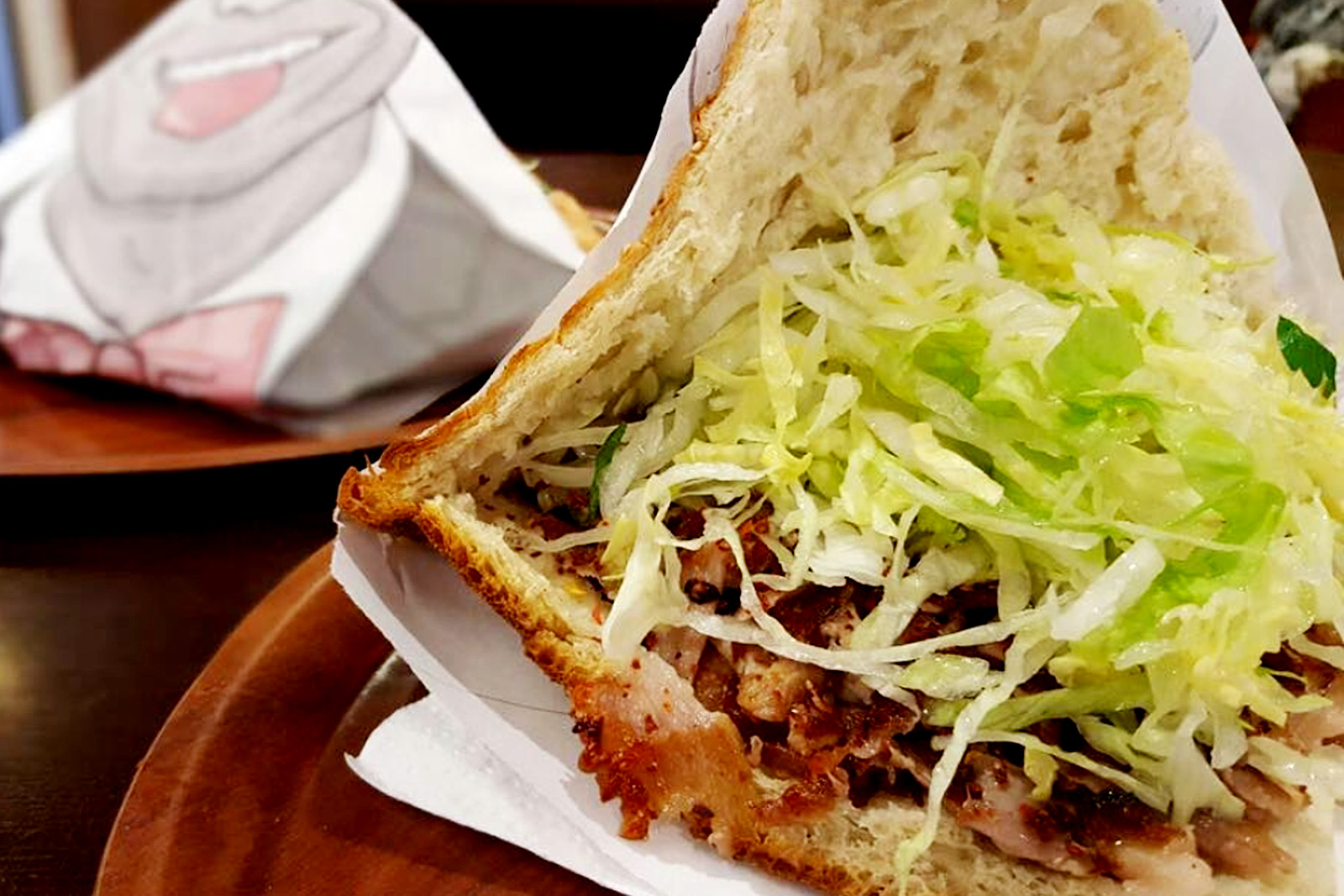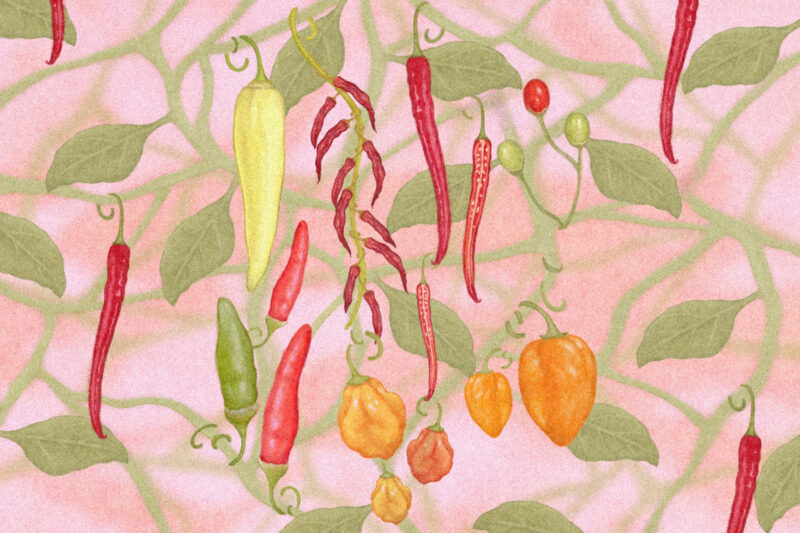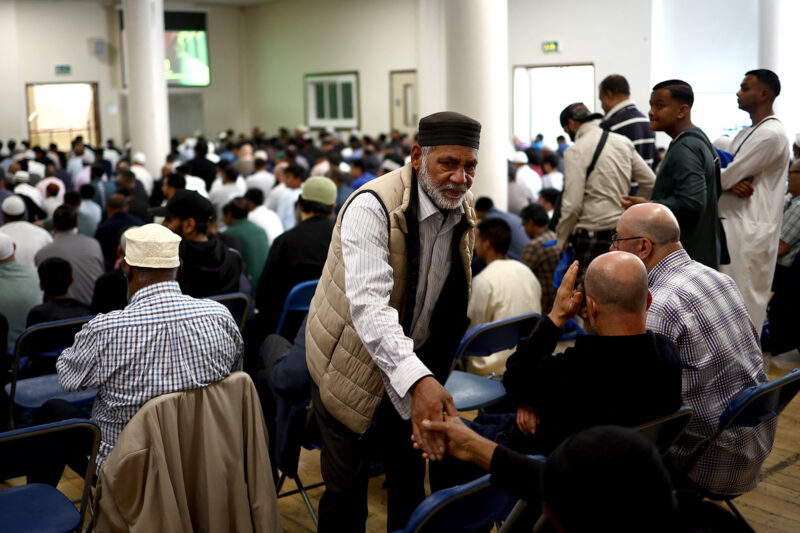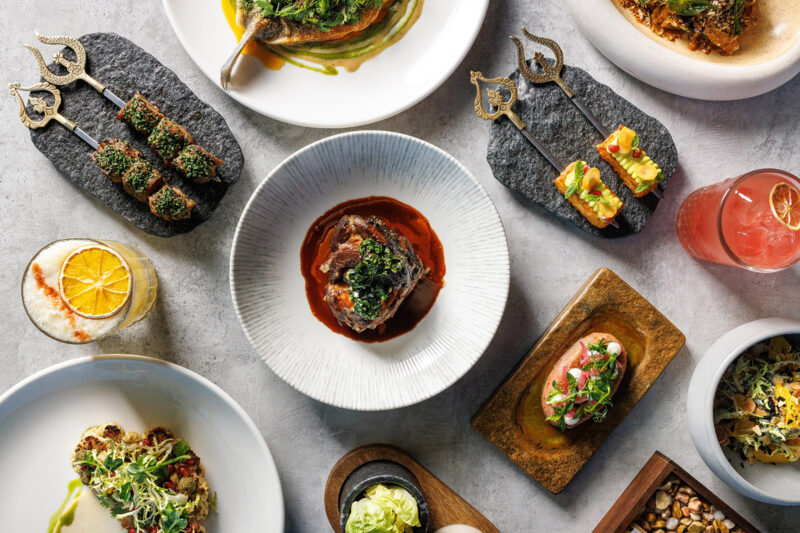How the döner kebab won Germany’s heart
The nation’s favourite fast food has become an economic bellwether, a shorthand for social attitudes and an enduring symbol of integration, but are its salad days over?
–

For Berliners craving a filling meal, the intersection of Kottbusser Tor in the central district of Kreuzberg is a promising destination. The surrounding streets are home to around a dozen brightly lit restaurants and takeaways serving up kebabs to hungry customers. Tadim has been run by the Türkmen family for the past 26 years and what sets it apart from nearby businesses is the traditional yaprak döner rotating slowly against a blazing vertical grill in the window.
A sign assures customers that the glistening layers stacked onto a spit in an inverted cone are 100% veal, as opposed to the cheaper, factory-produced versions available nearby. The meat is crisped to a deep brown before it is sliced, wafer-thin, with an arm-length steel blade and piled in a warmed triangle of bread that is both crunchy and pillowy, with salad, tomatoes, onions and a choice of chilli, garlic or herbed yoghurt sauce.
Tadim, which sells more than 100 sandwiches daily, is tucked between an alleyway and a noodle kiosk, looking out on to a raised train line where yellow carriages screech over the traffic below. High-rise apartment blocks tower overhead. The backlit board behind the counter announces that one of its signature kebabs costs €6. While that might not seem much, it’s almost 50% higher than just 12 months ago.
Owner Tolga Türkmen explains that since Russia’s invasion of Ukraine sent inflation spiralling around the world, the price of everything has gone up: meat, salad, bread, packaging, gas. But he stresses that Tadim is a family concern, founded by his father in 1997, using a family recipe. He grimaces at the thought of selling the cheaper, processed kebabs offered by his competitors.
“If we did it differently, it wouldn’t be Tadim,” he says, sitting on a picnic bench outside the restaurant.
The döner kebab is Germany’s favourite fast food. Across the country some 18,000 shops sell roughly 550 tonnes of kebab meat every day. Neither McDonalds nor KFC come anywhere close to this multibillion-euro trade. Chains are uncommon and most restaurants are small, family operations, usually run by members of the country’s at least three-million-strong Turkish diaspora.
“Döner is now an export item all over the world,” says Eberhard Seidel, the author of Döner: A Turkish-German Cultural History. “You can say that today Berlin is the döner kebab metropolis of the world.”
Overseas, the German döner’s fame continues to grow. German-style kebab restaurants have opened in New York, London and Dubai, and every Berlin guidebook mentions Mustafa’s, a döner truck where you can expect to queue for an hour to be served. Yet at home, the media has proclaimed a national emergency: a döner crisis.
In 2022, inflation averaged 8% in Germany, the highest level in the country’s postwar history. The price of a kebab rocketed further still. While hikes of 50% have been seen across Berlin, other cities have witnessed even larger rises. In an effort to placate customers some vendors have fixed diagrams to their windows, breaking down the soaring costs of ingredients and energy.
In October, a man shouted at Chancellor Olaf Scholz on the street in Munich, demanding that he negotiate with Vladimir Putin to end the war in Ukraine because the price of a kebab had doubled. His protest wasn’t entirely serious, but outraged headlines a few weeks later about a €10 döner in Frankfurt made it clear that this was no laughing matter.
Ahead of Berlin’s state elections this February, the ruling Social Democratic Party designed humorous posters calling for a döner price cap, a reference to similar policies introduced to protect families and businesses from spiking energy bills.
Although lighthearted, the campaign shows how fundamental the price of a kebab has become in modern Germany. Since its arrival in the 1970s, a cheap döner has become part of the social contract and a basic measure of the good life. Welfare payments and the minimum wage are frequently discussed in terms of how many kebabs they can pay for. In many ways, the döner can be seen as Germany’s great equaliser: enjoyed by politicians, CEOs, ordinary workers and refugees alike.
While the döner is arguably the most prominent symbol of Turkish-German integration, it has also always been a product with an artificially low value, its price kept down for decades by the long hours of low-paid — and sometimes free — labour that often accompany family businesses, and intense competition within a saturated market.
“It was the favourite food of the working class because it had an amazing price-to-performance ratio. For €5 you got a full meal,” Seidel explains. “But the high degree of self-exploitation in the industry and the kebab shops was a prerequisite for a cheap döner.”
The fortunes of the German döner have always been dictated by the changing currents of the nation’s economy and its labour market. Now, as the circumstances in which it rose to prominence have changed, so have those of the Turkish workers who made and sold it.
In the late 1950s and early 1960s, West Germany’s postwar economic boom delivered near-full employment. Threatened by a critical shortage of some workers, the government struck a series of recruitment deals with foreign countries in southern Europe, North Africa and Asia. Hundreds of thousands of people known as Gastarbeiter (guest workers) arrived on the understanding that they would work, save and return home a few years later with money in the bank and a more secure future.
The deal made with Turkey in 1961 was to prove the most consequential of all. Turkish workers — mainly young men from rural areas — made their way to German cities en masse, filling vacancies on construction projects, in steel mills and car factories. The jobs were initially limited to two-year contracts but extensions were gradually introduced, allowing family members to come live in the country. By 1972, Turks overtook Italians to become Germany’s largest immigrant group.
“Gastarbeiter were not visible,” Yunus Ulusoy of the Center for Turkish Studies and Integration Research at the University of Duisburg-Essen explains. “They went to jobs where they weren’t seen. They lived in collective housing. Their cuisine, their eating habits were not known in Germany at that time.”
The oil crisis of 1973 brought a sudden end to Germany’s prosperity. The economy contracted, recruitment agreements were ended and factories laid off workers in their thousands. Turks fared worse than German employees. But while many Italians, Greeks and Yugoslavs left, the Turkish community grew as women and children continued to arrive. Life in Germany still offered better prospects than the high inflation, widespread unemployment and political instability that they faced at home.
As more settled Turkish communities developed, shops and restaurants that catered to them began to spring up. With factory work and other manual labour scarcer and less secure, independent businesses offered a viable way to make a living — and that’s where the döner was born.
The distinctive vertical grill used to cook döner kebabs was invented by an Anatolian chef named Hamdi Usta in the mid-19th century, but those sold in Germany today would be unrecognisable to him.
According to Seidel, meat had long been prohibitively expensive for working people in Turkey. Even in the 1970s, such dishes largely remained the preserve of the middle classes, eaten in formal restaurant settings. In Germany, where ingredients were cheaper, relative to average wages, the döner found the perfect home — a place where it could fulfil its potential.
The Association of Turkish Döner Manufacturers has credited Kadir Nurman with pioneering the dish in 1972 at his shop near Zoologischer Garten train station in Berlin. Nurman’s twist on the Anatolian original was to place the meat in bread, creating a quick and hearty hand-held meal. His innovation proved such a hit with Turkish workers that it would soon be copied by hundreds of small businesses.
Whether Nurman’s was truly the first döner remains a point of contention, but there is no doubt that Kreuzberg is where Turkish culture and cuisine flourished in 1970s Germany. The postwar division of Berlin had left the district, which ran directly along the wall erected by communist East Germany in 1961, undesirable and ramshackle.
However, cheap housing led members of the Turkish community to settle in large numbers. One of the country’s first Turkish bazaars was set up over the platforms of the decommissioned Bülowstraße station and döner shops proliferated. By 1982, an estimated 200 were dotted across the city.
In those early days, vendors had to do all their own sourcing, butchery and preparation. The work was hard and the wages meagre, but entrepreneurship came with autonomy and the opportunity to provide employment to family members. Döner shops also quickly became spaces where the Turkish community could feel at home, providing much-needed venues where friends and relatives could congregate. Local Berliners rarely ventured in.
“German customers were a rarity in the early days,” says Ulusoy. “It was a niche product for niche customers.”
Over time, the aroma of grilled meat proved irresistible. When Germans found their way through the doors, the döner began to evolve into the dish it is today. Unheard of in Turkey, the salad garnish usually features sliced red and white cabbage, a staple of German cuisine. Meanwhile, the now-ubiquitous white sauce is a nod to the national love of garlic. Soon, spits were rotating from the northern port of Hamburg, through the industrial heartland along the Rhine and deep into Alpine Bavaria.

Sliced veal remained the common main ingredient until the 1980s. Then, the rapid expansion of döner shops prompted a turn to minced meat, densely packed and sculpted into the classic döner shape. While the meat was often of low quality, which kept prices down, speculation as to its provenance was widely fuelled by racism. Fears about the cattle disease BSE also prompted a shift to the chicken döner. As the tradition of assembling the spit on-site all but died out, production moved to factories and commercial bakeries supplied the bread.
Those facilities were largely owned by Turkish Germans, some of whom made millions. Remzi Kaplan, the son of two Anatolian Gastarbeiter, started out with a few döner kiosks in the former West Berlin, then expanded east after the fall of the Berlin Wall in 1989. Now, Kaplan Döner Production owns facilities in several cities, including Europe’s largest — in Poland, where the minimum wage is less than half of that in Germany.
Reunification introduced millions of new Germans to the döner. Some, like the future chancellor Angela Merkel, even spent their first western marks trying one. Although it opened up a whole new frontier — and countless new customers — to any entrepreneur brave enough to go east, the period was one of the darkest yet for Turkish Germans.
Extremist right-wing gangs thrived in the collapsing economy of the former East Germany and the west witnessed a massive spike in xenophobic violence. One of the most shocking incidents came in 1993, when far-right skinheads set fire to the home of a Turkish family in the city of Solingen, killing five people. Seidel’s research estimates that at least 1,000 attacks on Turkish restaurants have taken place in the east of the country since reunification.
During the early 2000s, a spate of unsolved killings was dubbed the “Döner Murders” by the German press, since two of the victims worked in kebab shops. Some newspapers also speculated about Turkish mafia involvement. It was later revealed that the crimes were racially motivated and committed by a neo-Nazi cell known as the National Socialist Underground.
More recently, a far-right gunman launched an attack In the city of Halle in 2019. After failing to enter a local synagogue and shooting one woman dead near the neighbouring Jewish cemetery, he drove to the closest döner shop and opened fire, killing one customer.
Anti-Turkish sentiment was not confined to the political fringes. Conservative chancellor Helmut Kohl was known to enjoy a döner, but he tightened immigration laws significantly in the early 1990s. Some years earlier, he had privately spoken of wanting to deport half of Germany’s Turkish population.
It took until 2000 for children born in Germany to non-German parents to become eligible for citizenship and the state only began to actively promote integration five years later. A reluctance to allow dual-citizenship means that many Turks still cannot get German passports.
Today, however, people with Turkish roots have far better opportunities than previous generations. Although widespread discrimination persists, young Turkish Germans can see success stories in many areas of public life, from federal cabinet minister Cem Özdemir to footballers such as İlkay Gündoğan, and the scientists Uğur Şahin and Özlem Türeci, who founded BioNTech and developed the first Covid-19 vaccine.
It is not a stretch to consider that the humble döner kebab has played a significant part in that trajectory. In an article for Der Spiegel in 2019, Germany’s federal commissioner for anti-discrimination Ferda Ataman described the dish as a “litmus test for democracy”: millions embrace it as an integral part of German culture, but some still choose to view it as an invasive, foreign presence within the country’s cuisine.
However, the döner’s heyday may be over. As a younger, more integrated and assertive generation of Turkish Germans aspires to better-paid, professional jobs, the arrival of new immigrant communities from Arab countries is making its own mark on German society. Now, many new restaurants are more likely to sell shawarma.
Ulusoy sees this fading of the döner’s fortunes as inevitable and symbolic of the Turkish community’s changing role in Germany. “The döner is an example of the transformation from guest worker to entrepreneur,” he explains. “But this success story has reached its zenith.”
At Tadim, the neighbourhood and clientele are totally different from when the restaurant first opened its doors. Türkmen guesses that these days more than half of his customers are tourists. While he has worked the grill since he was a teenager, his own children have no interest in taking over the business.
“My kids would like to do something else,” he says. “Young people want Mercedes and nice clothes. You can’t get that through döner. My parents’ generation, they didn’t speak German, so they sold döner for money. Now, the younger ones just want to eat it, not make it.”
 Newsletter
Newsletter












